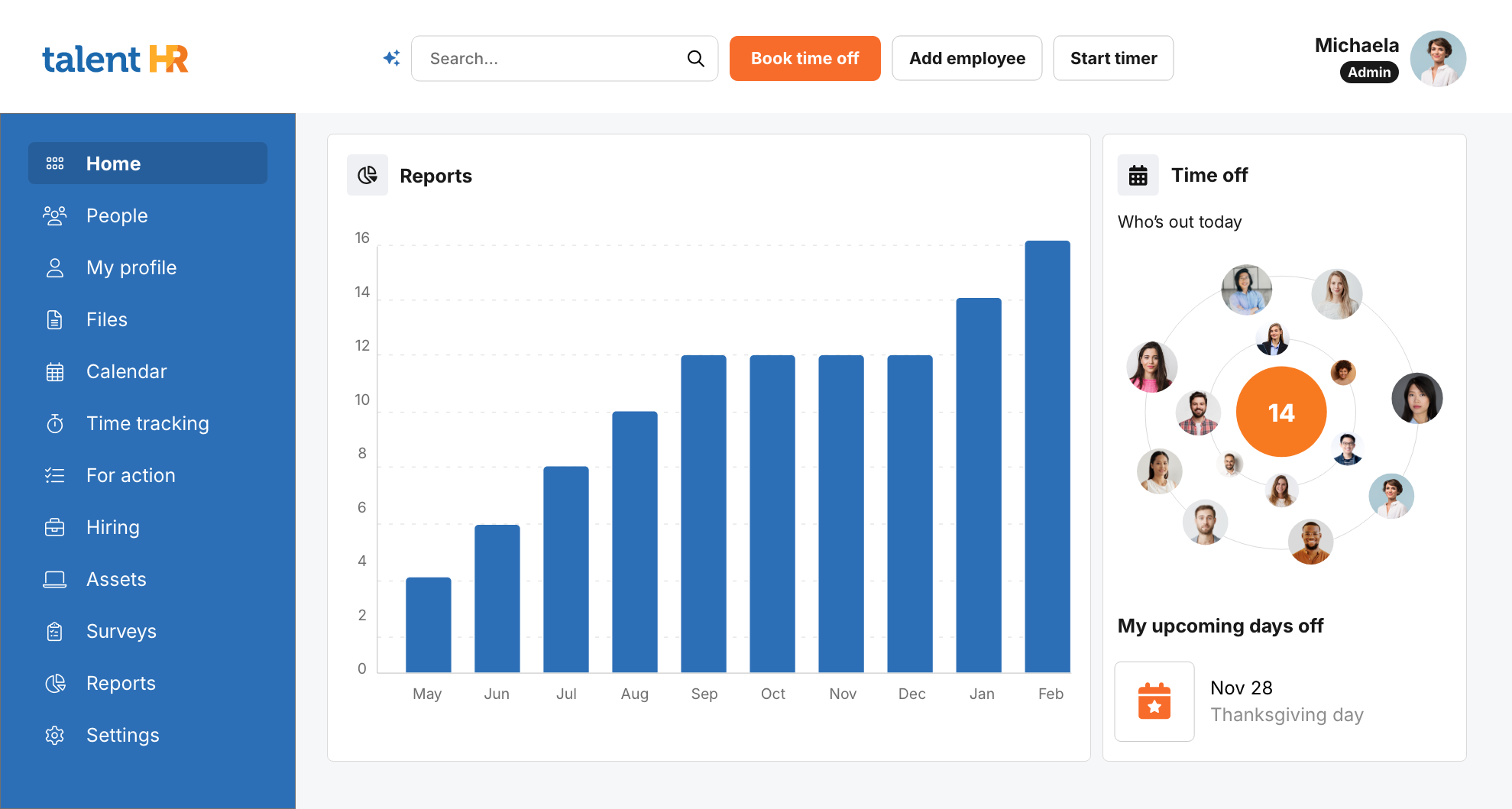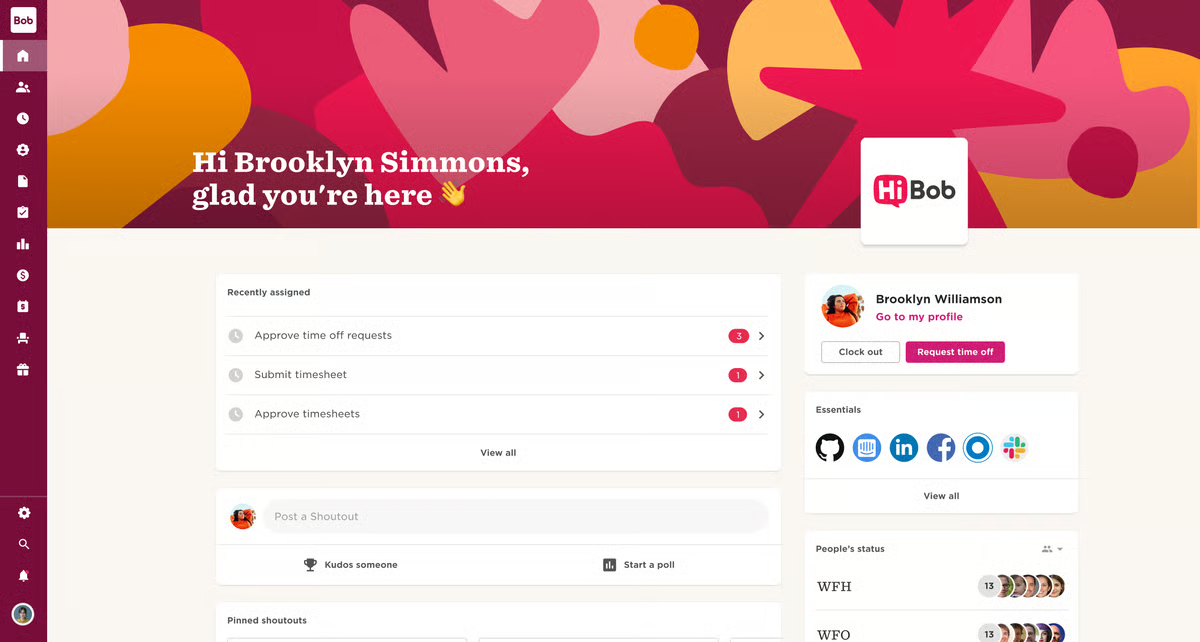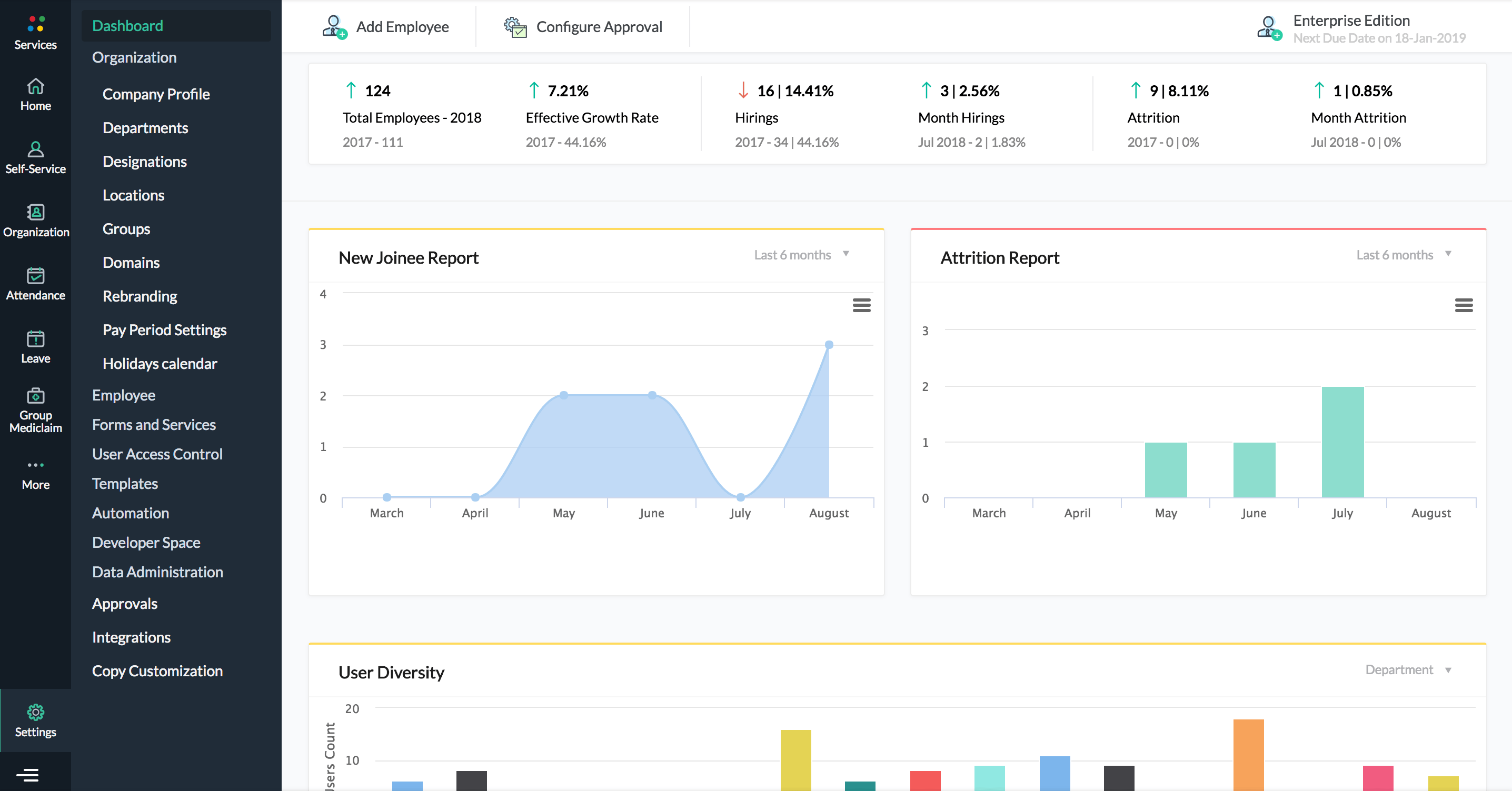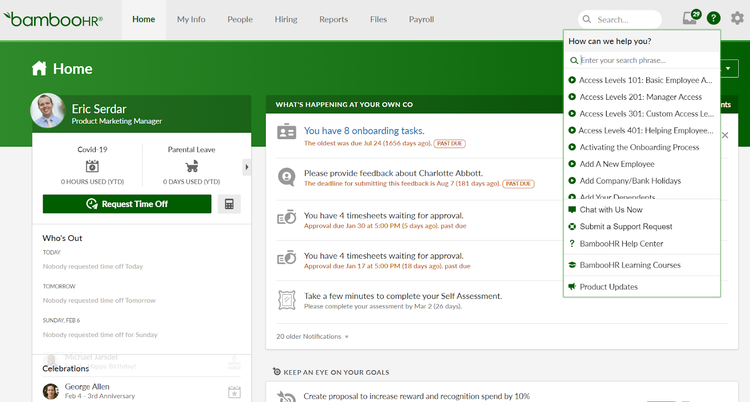
5 Best HR Cloud Software in 2025
HR is definitely not what it used to be. With remote work now standard and teams spread across time zones, the days of managing people ops through spreadsheets, paper files, or outdated systems are firmly in the past. Today’s workforce demands speed, flexibility, and a digital-first employee experience.
That’s why cloud based HR software has become so valuable. With tools for onboarding, compliance, performance tracking and time-off requests, cloud-based platforms are upgrading HR operations like never before—freeing up time, reducing repetitive HR tasks, and resulting in better employee experiences. These cloud based solutions can help improve employee engagement, boost operational efficiency, and support employee well being.
The latest wave of HR tech brings machine learning, AI tools, and easier integrations into the fold. Whether you're scaling a startup or optimizing HR for a hybrid team, now is the time to upgrade your toolkit.
What is HR Cloud Software?
HR cloud software is any digital platform that helps businesses manage their human resources operations online. Since it's "cloud," it means it takes no clunky installations, no physical servers, and no paperwork. Everything lives in an online database (the cloud), meaning it’s accessible anytime, anywhere.
At its core, HR cloud software centralizes and automates core HR processes like:
- Employee data management
- Hiring and onboarding
- Time tracking and leave management
- Employee attendance
- Performance reviews and employee performance management
- Document handling, compliance, and benefits administration
Cloud vs. On-Premise: What’s the Difference?
While traditional HR systems require on-site servers and manual updates, cloud-based HR systems run on remote servers and are accessed via web or mobile apps. If you take responsibility for handling the cloud solution, there's not much difference with having an on-premise setup. The best benefits come with a software as a service, or SaaS, solution. Having a cloud-based SaaS solution means:
- No IT maintenance on your end
- Automatic updates with new features and fixes
- Secure, scalable infrastructure that grows with your business
Why It Matters
Cloud-based HR tools are built for modern HR teams. They support remote work, offer self-service portals for employees, and make collaboration easier across departments and locations. Plus, they’re flexible enough to suit startups and established businesses alike because their pricing and performance scale up.
In short: If you're still managing HR the old-school way, you’re missing out on time savings, compliance peace of mind, and a smoother employee experience. Cloud-based software has already changed human capital management because it allows both big and small companies to manage the complete employee lifecycle. These platforms allow firms to gain insights from employee data and speed up HR operations.
How to use AI in HR: 5 Examples for 2025 →
Key Features to Look For in Cloud HR Software
Not all HR platforms are created equal. The best HR software in 2025 goes beyond digitizing paperwork, and it also simplifies workflows, gives employees more autonomy, and supports compliance in one centralized system.
Here are the core features to prioritize when evaluating your next HR tool:
It's a SaaS (And this Means it's Affordable)
SaaS solutions and cloud HR software solutions are not strictly the same. When shopping for an HR tool, make sure it's a SaaS and not just cloud-based. A SaaS provider will take care of the boring IT duties, and this will also mean the solution is more affordable. This is because SaaS providers can scale your resources up as you need them, so you never overpay. This is not a feature as in "a button," but it might be the most important attribute to look for, properly speaking.
Centralizes Employee Data
A reliable HR cloud platform stores all employee information—like job titles, emergency contacts, and compensation history—in one secure, searchable location. This centralization simplifies HR processes and provides easy access for both HR professionals and leadership teams. Secure data encryption is also integral to protecting this information, and the best solutions have it.
Time Off Tracking and Time Tracking
Managing PTO, sick days, employee hour records, and work hours shouldn’t involve guesswork. Look for software that lets employees submit leave requests and log hours with ease while giving managers real-time visibility and approval controls.
Self-Service Portal
Give employees control over their own information. A self-service portal allows staff to update personal details, access pay slips, request time off, and more without routing everything through HR. It reduces HR admin tasks and gives employees more autonomy.
Document Management and E-Signatures
Document management tools with built-in e-signatures simplify how teams handle paperwork like contracts and policy updates. A good platform should let you upload, share, and store documents securely, while tracking who’s signed what, in a way that eliminates bottlenecks and reduces risk.
Onboarding and Offboarding
First and last impressions matter. Look for onboarding tools that automate welcome emails, checklist assignments, and document collection. The very same tool should also help you offboard employees.
Compliance Tools and Analytics
The best cloud platforms come packaged with features that support data security and tried-and-tested employee data protection. The tools also have built-in analytics and HR data dashboards that help you monitor trends, spot issues early, and guide better decision-making.
5 Best HR Cloud Software in 2025
Selecting the right HR cloud software can significantly simplify your people operations. Based on user reviews and industry insights, here are the five top-performing HR platforms in 2025:
1. TalentHR

TalentHR is a lightweight yet powerful cloud-based HR software built with simplicity and speed in mind. Specially designed for small to mid-sized teams, it offers a modern alternative to clunky legacy systems without sacrificing functionality. With its core HR tasks, tools, and advanced features, TalentHR helps lean teams stay organized, automate admin work, and deliver a better employee experience. It all happens from a single, intuitive dashboard.
Where TalentHR stands out is in its clean design and how easy it's to run automations with it. The platform covers key HR related tasks because it allows companies to have centralized employee records, time off tracking, and onboarding workflows. On top of this, its document management system allows HR staff to upload, share, and store key files, complete with its document signing software for matters like contracts and policy acknowledgments.
Access to core HR apps is free for up to 10 users, with no time limits. All new users receive a 14-day free trial of premium features. This is one of the market's most affordable HR SaaS solutions.
Pros:
- Highly intuitive interface — easy to adopt
- Built-in document management with e-signatures
- Onboarding tools that simplify the employee ramp-up process
- Thousands of well-documented integrations
- Offers a free forever plan for small teams
- GDPR-compliant and regularly updated with new features
Cons:
- The company is still rolling out features
Ideal for: Startups and small businesses seeking a cost-effective HR solution that supports human resources management in an all-in-one cloud HR software system. Ideal for business owners and HR reps alike.
2. Deel

Deel is a cloud-based platform focused on helping companies manage international teams. It combines tools for hiring, onboarding, payroll systems, and contractor management. Deel supports compliance across 100+ countries and integrates with major HR and finance tools.
Pros:
- Simplifies payroll and contractor management across borders
- Helpful for maintaining compliance in multiple countries
Cons:
- Can be expensive for startups or small teams.
- It's mostly a payroll solution, and other HR components are an afterthought.
Best for: Companies managing remote or international teams, especially those with a mix of employees and contractors that need global payroll software and benefits administration.
3. HiBob

HiBob—often just called "Bob"—is a complete HR platform designed for fast-growing companies. It has modules for HR management, onboarding, performance tracking, time-off, and compensation. Built with modern UI and customizable workflows, it’s known for being easy to use and adaptable to remote or global teams.
Pros:
- It's cleverly designed to drive employee engagement up
Cons:
- Pricing is not transparent—you need to ask them for a quote!
- There are certain features that are excessively shoehorned to the UK market
Best for: Mid-sized companies and scaling startups that need a modern HR system with strong talent management and sales performance management tools.
4. Zoho People

Zoho People is a flexible HR platform designed for small to mid-sized businesses. It covers core HR functions like attendance, time tracking, onboarding, leave management, and performance tracking—accessible via web, mobile, biometrics, and facial recognition.
Pros:
- Affordable pricing with a lot of features
- Plenty of integrations thanks to Zoho Connect
Cons:
- Pricing is great, but a bit confusing
Best for: Small to mid-sized businesses looking to digitize and automate HR processes affordably with cloud HR systems and cloud HR software systems.
5. BambooHR

BambooHR is a cloud-based HR system. It covers basic queries like onboarding, time tracking, document storage, and performance reviews.
Pros:
- It has a big market share, and job seekers know it
- Built-in reporting tools for tracking HR trends and helping HR leaders gain insights
Cons:
- According to users, in the last couple of years, their growth has outpaced their customer service
- Pricing is not transparent—it actually requires you to ask for a quote!
Best for: Companies looking for a straightforward HR platform with solid core features and a focus on usability.
How to Tell the Difference Between Time-to-Hire vs Time-to-Fill →
Final Thoughts
The best tools will bundle an applicant tracking system and help you manage employee records, launch a Careers page, write job ads, centralize sensitive employee data, and support the entire employee lifecycle. But the definitive feature companies should look out for is scalability. Scalable and affordable solutions are the best way to go because it means a company can keep a single HR system as it grows.
Most top providers offer free trials or product demos, so take advantage of them. One of the best ways to choose the right platform is to try it out in real life.
Not sure where to start? TalentHR is a great option to check out if you're looking for a simple, modern tool designed for growing teams. You can register now for free.

![3 Best HR Automation Tools to Save Time (And Money) [2025]](/content/images/size/w600/2025/07/3-Best-HR-Automation-Tools--2025-.png)
